Red ironbark is a very distinctive Australian hardwood that has been prized for over 200 years for its strength and durability.
Mugga, Ironbark
Eucalyptus sideroxylon

Red ironbark is a handsome Australian hardwood that grows readily from Victoria through the western slopes of NSW into southern Queensland. As one of a very distinctive group of Australian eucalypts, the ironbarks, it can be easily recognised by its hard, deeply furrowed, rough bark ranging from a dark grey to black hue. It has been a preferred structural timber for over 200 years, due to its long-term performance in weather-exposed structural applications.
Red ironbark heartwood is a deep dark red to red-brown. By contrast, its sapwood is a distinctive pale yellow in colour. The timber's texture is fine and even with an interlocked grain. It is extremely hardwearing and highly durable, allowing for wide range of external applications. However the timber is very hard to work, limiting some applications that require fine detailing. It is slow to dry and care needs to be taken to minimise surface checking.
Red ironbark is ideal for engineered structures that require excellent durability and strength, including wharf and bridge members, poles, railway sleepers, mining timbers. The timber is also suitable for all building construction materials from poles, framing, flooring, decking and cladding. Additionally, the wood is suitable for both indoor and outdoor furniture.
The red ironbark tree has a tendency towards piping, where a hollow forms in the trunk's centre trunk and reduces recovery rates and sectional sizes of sawn timber.
Shrinkage
| Very Low | Low | Medium | High | Very High | |
|---|---|---|---|---|---|

|
|||||
Tangential : |
6.30%
|
||||
Radial : |
3.50%
|
||||
Unit Movement Tangential: |
0.37%
|
||||
Unit Movement Radial: |
0.27%
|
Strength Group

Very High |
High |
Reasonably High |
Medium High |
Medium |
Reasonably Low |
Low |
Very Low |
||
Unseasoned: |
S1 |
S2 |
S3 |
S4 |
S5 |
S6 |
S7 |
S8 |
|
|---|---|---|---|---|---|---|---|---|---|
 |
|||||||||
Seasoned: |
SD1 |
SD2 |
SD3 |
SD4 |
SD5 |
SD6 |
SD7 |
SD8 |
|
 |
Stress Grade

| Structural No. 1 |
Structural No. 2 |
Structural No. 3 |
Structural No. 4 |
Structural No. 5 |
|
Unseasoned: |
F27 |
F17 |
F14 |
F11 |
F8 |
Seasoned: |
F27 |
F22 |
F17 |
F14 |
F11 |
Density per Standard

Seasoned: |
1050kg/m3
|
|---|---|
Unseasoned: |
1160kg/m3
|
Joint Group

Very High |
High |
Reasonably High |
Medium |
Low |
Very Low |
|
Unseasoned: |
J1 |
J2 |
J3 |
J4 |
J5 |
J6 |
|---|---|---|---|---|---|---|
 |
||||||
Seasoned: |
JD1 |
JD2 |
JD3 |
JD4 |
JD5 |
JD6 |
 |
Colour

| White, yellow, pale straw to light brown | Pink to pink brown | Light to dark red | Brown, chocolate, mottled or streaky | |
 |
||||
Mechanical Properties
Modulus of Rupture - Unseasoned: |
107
|
|---|---|
Modulus of Rupture - Seasoned: |
149
|
Modulus of Elasticity - Unseasoned: |
15
|
Modulus of Elasticity - Seasoned: |
17
|
Maximum Crushing Strength - Unseasoned:  |
53
|
Maximum Crushing Strength - Seasoned: |
79
|
Impact - Unseasoned: |
20
|
Impact - Seasoned: |
13
|
Toughness - Unseasoned: |
High - 25 Nm and above
|
Toughness - Seasoned: |
Medium - 15 - 24 Nm
|
Hardness - Unseasoned: |
10.7
|
Hardness - Seasoned: |
11.9
|
Durability
| Low | Moderate | Reasonably High | High | |
| (0 - 5 yrs) | (5 - 15 yrs) | (15 - 25 yrs) | (more than 25 yrs) | |
In-Ground: |
 |
|||
| (0 - 7 yrs) | (7 - 15 yrs) | (15 - 40 yrs) | (More than 40 yrs) | |
Above ground: |
 |
|||
| (0 - 20 yrs, usually < 5) | (21 - 40 yrs) | (41 - 64 yrs) | (More than 60 yrs) | |
Marine Borer Resistance: |
 |
Lyctid Borer Susceptibility: |
Susceptible |
|---|---|
Lyctid Borer Susceptibility - Other: |
|
Termite Resistance: |
Resistant
|
Fire Properties
| 0 | 1 | 2 | 3 | 4 | 5 | 6 | 7 | 8 | 9 | 10 | |
EFH Spread-of-Flame Index: |
|||||||||||
EFH Smoke-Developed Index: |
Critical Radiance Flux - Lower: |
>2.2 and <4.5 |
|---|---|
Critical Radiance Flux - Higher: |
<4.5 |
Smoke Development Rate: |
<750
|
| 1 - non-combustible | 2 - reasonably non-combustible | 3 - slightly combustible | 4 - combustible | |
Fire Properties Group |
Group Number - Other: |
3 if used on MDF or particleboard ≥12mm; veneer thickness 0.6-0.85mm
|
|---|---|
Average Specific Extinction Area: |
<250
|
Bushfire Resistance: |
BAL 12.5, 19 and 29 – All AS3959 required applications
|
Red ironbark heartwood is a deep red, contrasting dramatically with its distinctive pale yellow sapwood. It has a fine and even texture with an interlocked grain.
Red ironbark is used for heavy engineering, transport, and marine construction, including poles, piles, sleepers, flooring, decking, bridge work, fencing, carriages and wagons, house framing and sporting goods. It is also useful for domestic and non-domestic decks, joinery, furniture and fit outs and expressed hardwood structures.
Red ironbark is very hard to work, limiting some applications that require fine detailing. It is slow to dry and care needs to be taken to minimise surface checking.
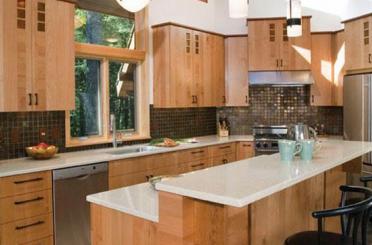
Joinery
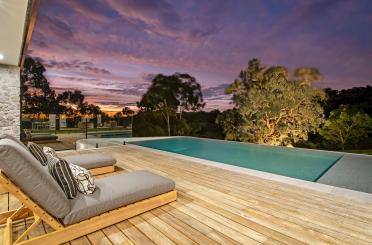
Decking

Fencing
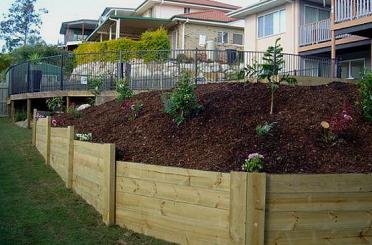
Retaining Walls (Landscaping)

Stairs, Exterior
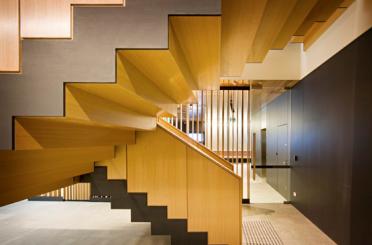
Stairs, Interior
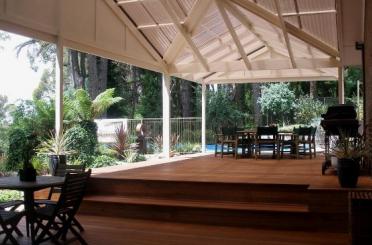
Pergolas
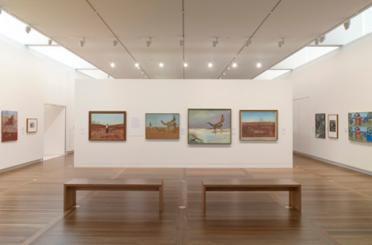
Flooring
Allied Forest Products

ATS Building Products
Austim Pty Ltd
Australian Timber

Authentic Gates Pty Ltd

Bakers Joinery

BAYWOOD

Branches Timbercraft
Britton Timbers

Cameron's H Hardware

Classy Timber Flooring

Coffs Harbour Hardwoods

Fewings Joinery Pty Ltd

FloorVenue

Garde Timber Pty Ltd
Green Light Milling
Hammer Roo

Market Timbers

Mathews Timber Pty Ltd

Matilda Veneer
McCormacks Australia

Outlast Timber Supplies

Parkside Timber

Pentarch Forestry

Ridgewood Timber Pty Ltd

Sawmill Trading Company

Simmonds

Thor’s Hammer

Three(3)DM Pty Ltd

Timbeck Architectural

Timber Blitz Pty Ltd
Timber Floors Pty Ltd

Timber Revival

TwentyOne (21) Timbers














